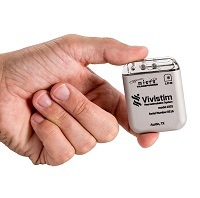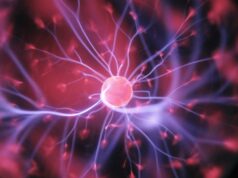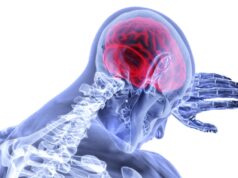
MicroTransponder has announced US Food and Drug Administration (FDA) premarket approval of the Vivistim paired vagus nerve stimulation (VNS) system, which—according to a company press release—significantly improves the effectiveness of rehabilitation therapy for stroke survivors with moderate-to-severe upper extremity impairment six months after stroke.
“One of the most frustrating things for our patients who have had a stroke is the inability to perform activities of daily living because of weakness of the upper limb,” said Gerard Francisco, professor and chair of physical medicine and rehabilitation at the University of Texas Health Science Center’s McGovern Medical School, and chief medical officer at TIRR Memorial Hermann, in Houston, USA. “The current therapies we prescribe are quite limited. Many of these therapies have not been shown to induce the neuroplastic changes important for long-lasting recovery. We are excited to offer our patients the Vivistim system to magnify their potential to recover further.”
Every year, approximately 800,000 people in the USA have a stroke, the release adds, and up to 60% of these survivors suffer from persistent impaired upper limb function six months following their stroke. Intense rehabilitation therapy is currently the best available treatment option for improving upper limb function after stroke.
MicroTransponder’s platform pairs VNS with rehabilitation therapy to help improve stroke-related arm and hand deficits. The Vivistim neurostimulation device is placed just under the skin of the chest and neck in a short outpatient procedure. During in-clinic rehabilitation therapy, a therapist pairs gentle pulses of VNS with standard rehabilitation exercises.
Preclinical data show that VNS triggers the release of neuromodulators, making rehabilitation therapy more effective by strengthening neural connections during these exercises. The Vivistim system can also be activated by the user at home during rehabilitation exercises or activities of daily living they wish to improve.
In the 108-subject VNS-REHAB pivotal study, published in The Lancet, Vivistim users showed statistically significant improvements in upper limb impairment and function as compared to intense rehabilitation therapy (<0.01). The study achieved its FDA-specified primary and secondary endpoints, and quality of life data showed 65% of Vivistim users reporting clinically significant improvements in their ability to perform activities of daily living as well.
“More than a decade of preclinical research has shown that pairing VNS with rehabilitation tasks strengthens neural connections and improves motor function,” said Navzer Engineer, chief scientific officer at MicroTransponder. “In our trial, Vivistim users showed a three-fold improvement in both arm and hand function compared to intense rehabilitation. Our therapy helped many chronic stroke survivors improve arm and hand function, allowing them to do activities that they were unable to do after their stroke. We look forward to researching ways to expand the Vivistim paired VNS platform to help patients with other chronic neurologic conditions.”
The Vivistim system has been granted a Breakthrough Device designation by the FDA and will be available in targeted US markets in late 2021, expanding nationally by the end of 2022, the MicroTransponder release states. The VNS implantation procedure has also been approved by the FDA as safe and effective for more than 20 years in other therapeutic areas.













